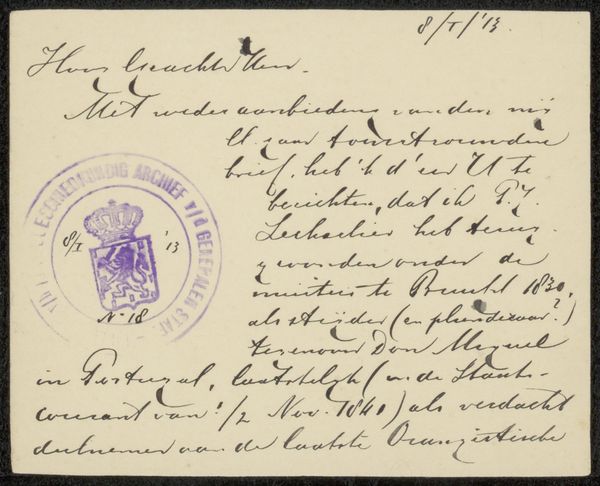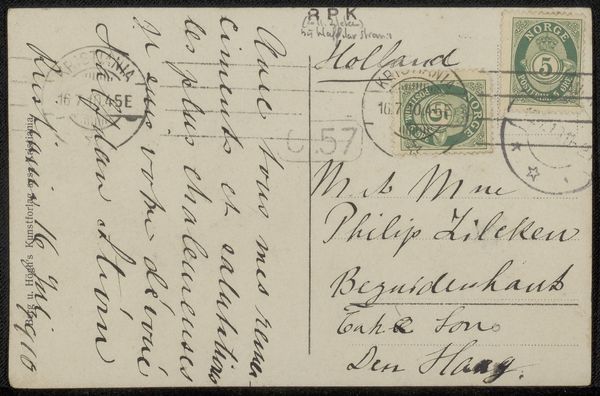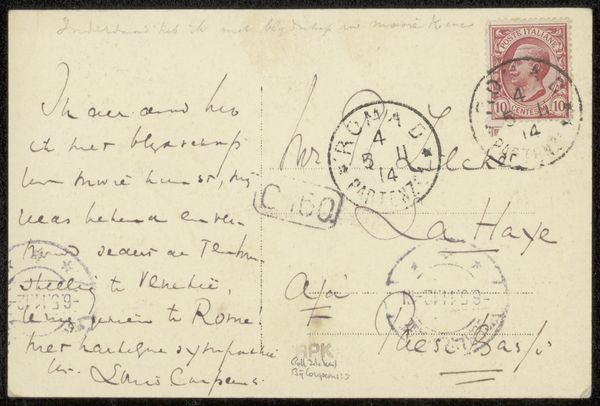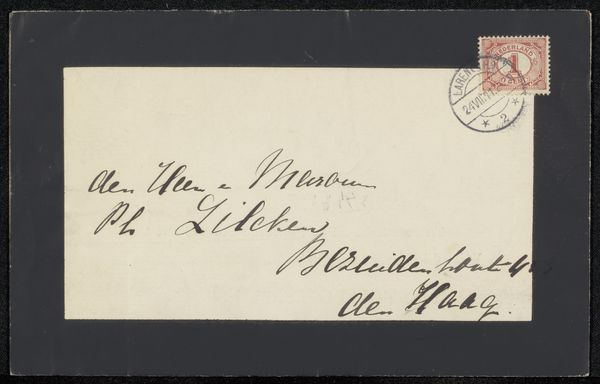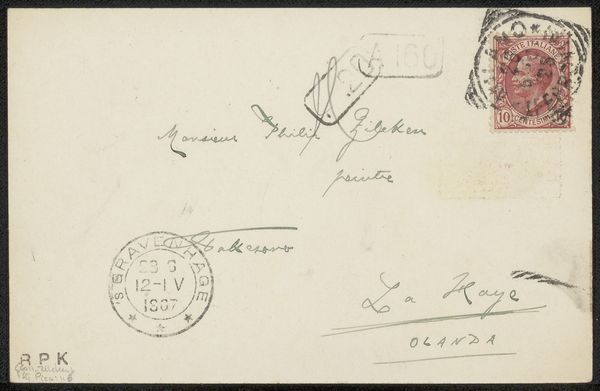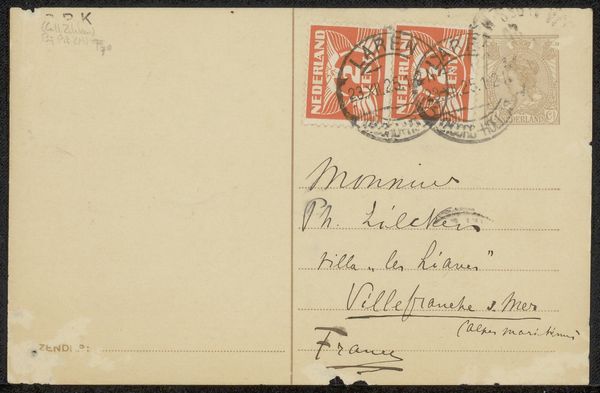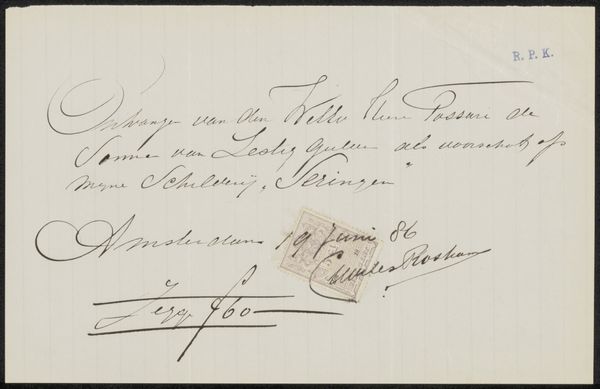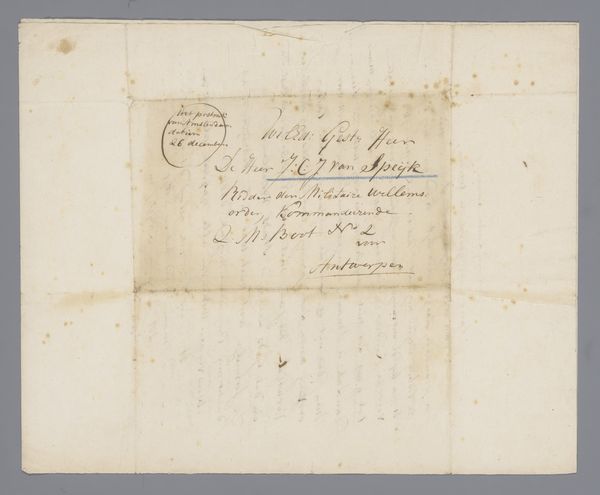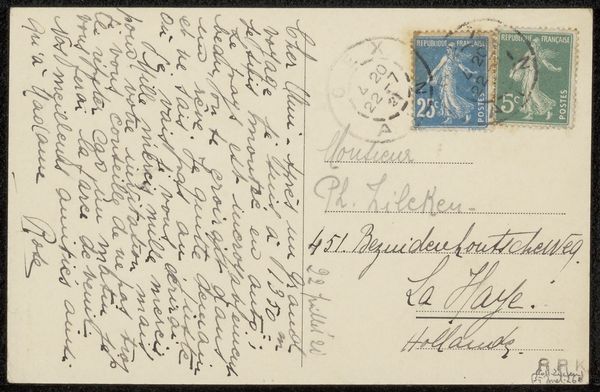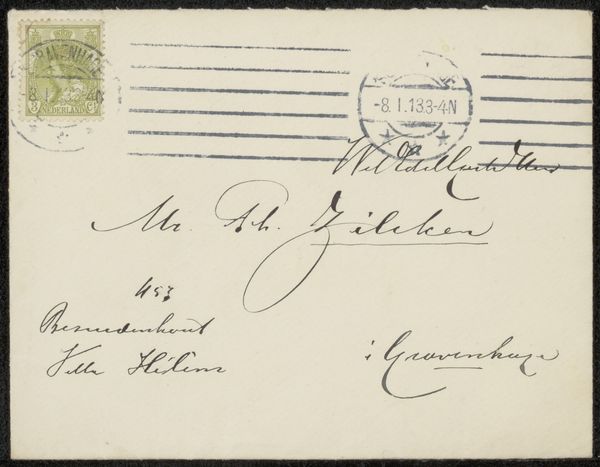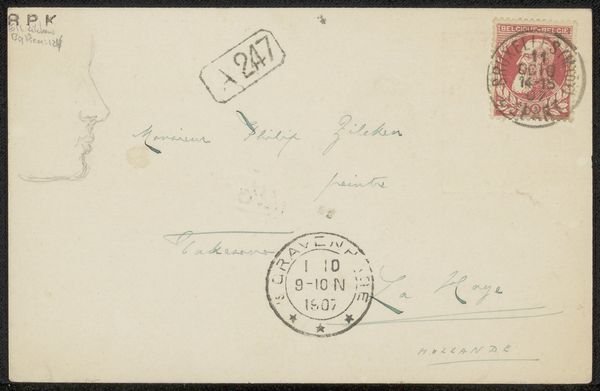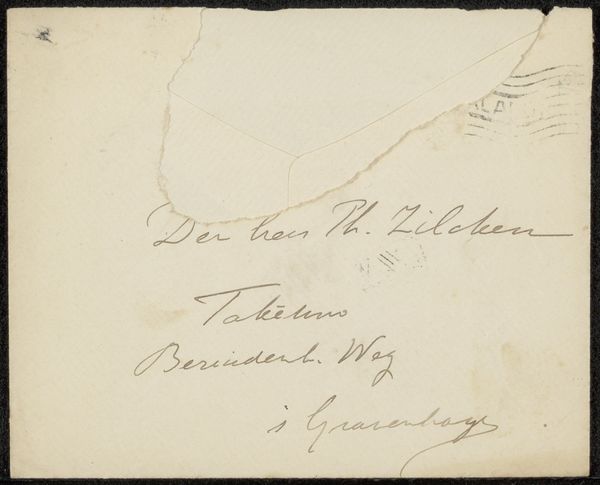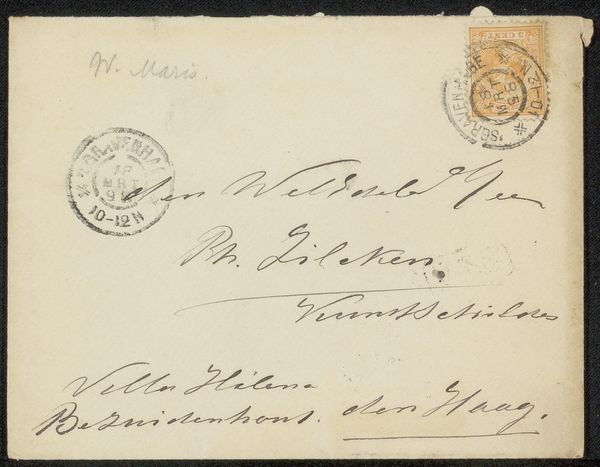
drawing, print, paper, ink, pen
#
portrait
#
drawing
# print
#
paper
#
ink
#
pen
Copyright: Rijks Museum: Open Domain
Curator: This is "Envelope to Jan Veth," created before 1908. It’s ink on paper – a humble yet significant artifact currently housed in the Rijksmuseum. Editor: It’s interesting to see something so ephemeral preserved. The visible address and stamp give it a very tactile feel. How can we see an everyday object like this as art? Curator: Precisely! It challenges our understanding of what constitutes "art." This envelope wasn't necessarily intended as art in the traditional sense. From a materialist perspective, we can analyze the means of its production. The paper itself - was it handmade, or mass produced? The ink, the printing of the stamp - these all speak to the socioeconomic conditions of the time, its technologies and networks. The handwriting, itself a lost art to most of us today, speaks to individual skill and a mode of communication predicated on the manual. Editor: So, it’s not necessarily about aesthetic beauty, but about what it represents in terms of labor and resources? Curator: Absolutely. We can ask questions like, "Who made this paper? What was their social status? What kind of labor practices were involved?" And, significantly, who received it, and what purpose did the communication fulfill? Answering these questions can give us invaluable insight to social and material conditions. We are seeing something very human. Editor: So it's a bit like looking at the production chain of a modern product, but for something from over a century ago. Curator: Yes! Seeing the means of production inherent within an historical object allows us to reflect on these conditions critically, comparing the then to the now. Editor: I'll never look at an old envelope the same way again. Thanks! Curator: It highlights the story objects tell of labour and materials – reframing the artistic merit itself.
Comments
No comments
Be the first to comment and join the conversation on the ultimate creative platform.

